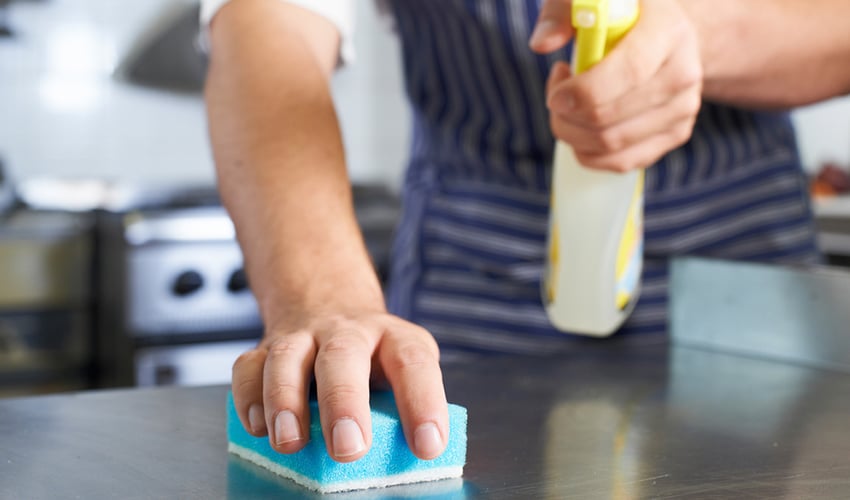Menu

Read on as we take a closer look at the ratings scheme and what restaurants need for hygiene compliance.
The Food Hygiene Rating Scheme, to use its full name, gives businesses a rating between 0 and 5. This is based on how well their establishment adheres to hygiene standards, where 0 requires urgent improvement and 5 is very good:
0 – Urgent improvement required
1 – Major improvement required
2 – Some improvement required
3 – Generally satisfactory hygiene standards
4 – Good hygiene standards
5 – Very good hygiene standards
Hygiene ratings can be given to anywhere where food is sold, supplied or just consumed, including restaurants, pubs and cafes, but also any of the following:
To rate businesses, local authorities send a food safety officer to undertake a full inspection. They check three key areas:
To get the best rating, businesses need to perform well in each of these three elements. Any failures will result in a rating of less than 5 and specific reasons will be given. That way, businesses know how they can work to improve their next rating.
So, what steps should restaurants take to improve their hygiene compliance?
Everyone who handles food is required by law to have level 1, level 2 or level 3 food hygiene training depending on the degree to which they’re involved in food handling. This covers the vast majority of food handling hygiene and hygiene management, so most restaurants are well aware of how to handle food safety. With this in mind, step one is to make sure all staff have up to date training.
However, one area where many restaurants slip up is their physical environment. While it’s required by law to keep staff training up to date, many businesses fall behind with the facilities in their kitchen.
To remain fully compliant, restaurant kitchens should be kitted out with hygienic facilities and furniture from top to bottom. This includes surfaces like table tops, floors and even walls. Even with regular cleaning, unsuitable surfaces or those in a poor condition can be impossible to maintain.
Flaking walls and hard-to-maintain tiles are no longer suitable for modern, hygienic kitchens. Fortunately, Igloo Surfaces offers an alternative that’s long lasting, cost-efficient and refreshingly easy to install. Our Arctic PVC wall panels are the perfect solution for commercial kitchens of any size. They’re low maintenance, highly durable and have an excellent rating.
Contact us today for more information.